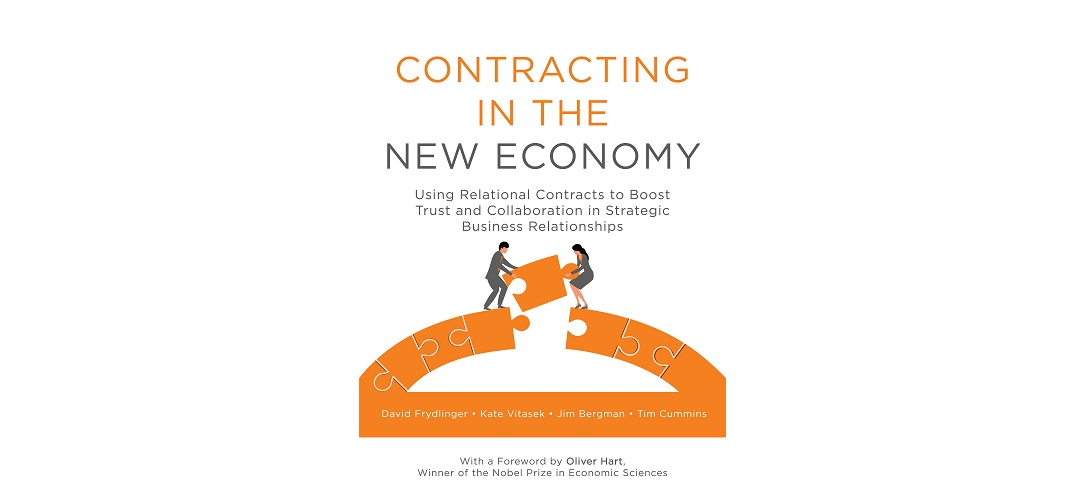By David Frydlinger, Kate Vitasek, Jim Bergman, and Tim Cummins
Contracting in the New Economy is a book about the why, what, when and how of relational contracting can boost trust and collaboration in strategic relationships.
As Nobel laureate Oliver Hart writes in the book’s Foreword, “for a long time I felt that the traditional approach to contracts, where lawyers try to think of all the possible things that can go wrong in a relationship and include contractual provisions to deal with them, is broken.”
And in today’s increasingly complex and uncertain world – and a world trying to recover from the Covid-19 pandemic – the conventional transactional approach to contracting works even worse.
So what is the better approach? The authors eloquently argue a formal relational contract where the parties put the relationship and proven relational mechanisms front and center with the goal to keep the parties in continual alignment. A formal relational contract creates a flexible contract structure grounded with a documented shared goals and guiding principles (social norms) the parties agree to apply if and when an uncontracted event occurs. In addition, it includes structured communication and governance processes to ensure the parties stay on the same page well after the contract is signed.
Theory and practice rarely converge, but authors masterfully merge the two in Contracting in the New Economy by taking the reader from the theory and history of relational contracting to the actual practice of creating formal relational contracts.
Hart’s work on contract theory figures extensively in this book, as do other stalwarts such as Oliver Williamson, another Nobel laureate. But the star of the book is how Canada’s Island Health and their Hospitalist applied the authors 5-step approach for relational contracting to achieve what can be classified as a fairly-tale turnaround on what has been a highly-contentious relationship made worse by a rigid-transactional contract.
The bottom line? It is the bottom line of companies. Now more than ever, organization need to be focusing on writing better contracts, with contracting processes and tools to enter into and “live” through long-term relationships. This book nails the why, what and how relational contracting can be used to boost trust and collaboration in strategic business relationships.












